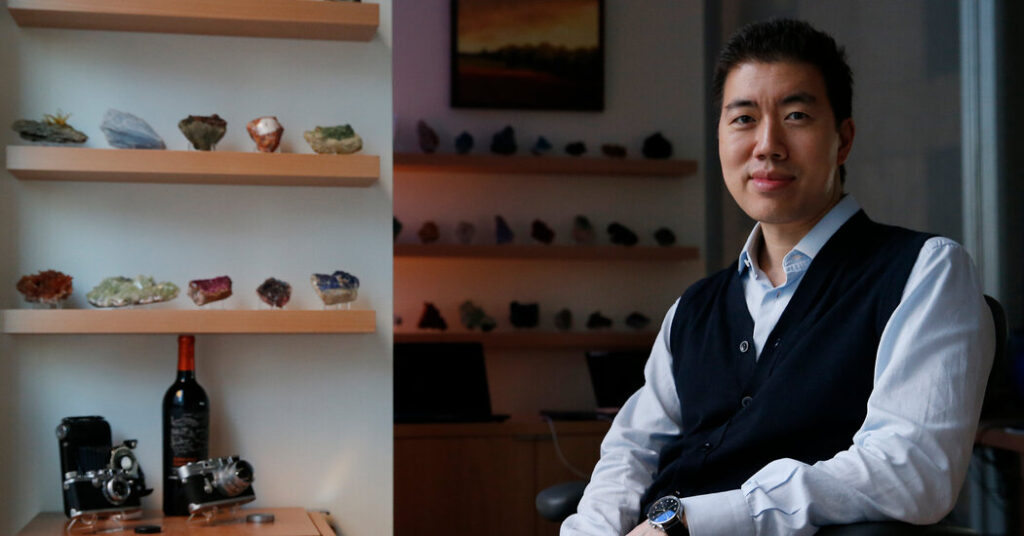Gene-editing therapies offer great hope for treating rare diseases, but they face big hurdles: the tremendous time and resources involved in devising a treatment that might only apply to a small number of patients.
A study published on Wednesday outlines a new approach that could make the process more efficient and less costly. Writing in the journal Nature, researchers presented a path toward a gene-editing strategy that could eventually be standardized for many different rare diseases, instead of personalized edits for each one.
“We are purposefully forgoing what is the most obvious way to treat a patient — fix their individual mutation back to the normal sequence,” said the study’s senior author, David R. Liu, a biologist at the Broad Institute and Harvard, who has pioneered several gene-editing advances.
Instead, he said, the idea is a “disease-agnostic” strategy: developing a technique that “could treat many more patients regardless of what mutation they have.”
There are more than 7,000 rare genetic diseases, conditions defined in the United States as affecting fewer than 200,000 people. Together, these diseases afflict about 30 million Americans and about 400 million people worldwide.
While the new approach is years away from potential use, it might ultimately apply to “a significant fraction” of those patients, conservatively about 10 percent, said Dr. Richard P. Lifton, the president of the Rockefeller University and head of its laboratory of human genetics and genomics.
The study focused on “nonsense mutations,” which cause proteins to be truncated — like a sentence stopped in the middle by an inserted period. Truncated proteins don’t work normally, and they cause or contribute to many rare genetic diseases. Rather than targeting those mutations themselves, Dr. Liu’s team engineered and inserted a type of molecule that caused cells to essentially ignore the wrongly placed biological stop sign and build a full-length protein.
It’s as if, instead of creating “a better mousetrap, they invented a cat,” said Fyodor Urnov, a professor of molecular therapeutics at the University of California, Berkeley, and a gene editor at its Innovative Genomics Institute.
Dr. Urnov, who was not involved in the study, called the approach “a really different way to use the core methodology of gene editing to hopefully make it available to a larger group of patients than the current toolbox of better mousetraps.”
Dr. Liu’s team reported testing the method in human cell models of four diseases — Batten disease, Tay-Sachs disease, cystic fibrosis and Niemann-Pick disease type C1 — and in a mouse engineered to have another human disease, Hurler syndrome. In each case, enough of the relevant protein’s function was restored that the change would be expected to alleviate symptoms of the diseases. Crucially, the method did not create genetic or biological missteps, they reported.
“It has tremendous tangible potential for scalability and for going away from bespoke, customized, personalized medicine to more generally applicable types of therapeutics,” said Rodolphe Barrangou, a professor at North Carolina State University and an expert in CRISPR, the invention that inaugurated gene editing.
Still, he and other gene-editing experts cautioned that it would take considerable further testing and other steps before the approach could become usable in patients.
“I don’t want to discount the longevity of the process and the many different difficulties inherent to delivery and regulation and clinical testing and de-risking and eventually approval,” said Dr. Barrangou, who is also an entrepreneur in gene-editing therapeutics and was not involved in the study.
While out-of-place stop signs on genes can cause or contribute to about 30 percent of genetic diseases, Dr. Liu said, there is variation within diseases, so truncated proteins are not the cause for every patient.
Dr. Lifton estimated that the new method could apply to 10 to 15 percent of patients with Duchenne muscular dystrophy or cystic fibrosis. Dr. Liu’s team also reported estimates for a couple of other diseases, saying the method might help 252,000 people with Stargardt disease and 31,000 people with phenylketonuria.
The study, funded by the National Institutes of Health and academic institutions, was spurred by a “bottleneck” in making gene editing more available to desperate patients, Dr. Liu said. Despite increasing scientific ability to fix disease-causing mutations, he said, “it’s not clear how to bring the science to patients, given that the vast majority of the 400 million people in this world with genetic diseases suffer from diseases too rare for companies to be able to recoup the costs of drug development.”
Dr. Liu himself has co-founded gene-editing companies that ran out of money to continue clinical trials after treating small numbers of patients. Three years ago, he challenged his lab to devise a method that would be “faster than developing one drug for each different mutation.”
Two postdoctoral associates, Sarah Pierce and Steven Erwood, spearheaded the effort, focusing on the out-of-place stop signs called premature stop codons, which produce the genetic equivalent of “stopping a novel after the first three paragraphs,” Dr. Urnov said. He said the team’s goal amounted to changing instructions to “stop ‘Moby-Dick’ after ‘Call me Ishmael’” and “cause Mother Nature to ignore that and go on through the rest of ‘Moby-Dick.’”
The key rested with a molecule called a suppressor tRNA, which can insert an amino acid at the stop codon position, allowing the cell to read through the place on the gene where it would have paused and make the full protein. After exhaustive testing, the team engineered an optimal suppressor tRNA. Then, using a genetic search-and-replace method that Dr. Liu’s lab invented called prime editing, they inserted it into a cell’s genome to replace an existing tRNA that was not serving any purpose.
Dr. Liu said efforts to create drugs based on suppressor tRNAs have encountered challenges, including that patients would need repeated doses indefinitely and that toxic effects could result. His lab’s method of reprogramming cells, called PERT (for prime editing-mediated readthrough of premature termination codons) would be a one-time edit, and it produced no toxicity or mistakes in other proteins.
Dr. Lifton, who is also on the board of Roche Pharmaceuticals and its subsidiary Genentech, said the biggest scientific difficulty treating patients with the method would be: “How do you deliver this to all cells in the body that would need to be corrected to prevent the worst outcomes from the disease?” Other gene-editing therapies have been delivered through a deactivated virus or a fatty lipid molecule, but that would be challenging for diseases of some organs, like the brain or lungs, he and others said.
And while some have succeeded, like the recent use of personalized gene editing to treat a baby, others have not, as with the death of a patient in a gene-editing trial conducted by Intellia Therapeutics, a company Dr. Barrangou co-founded.
Dr. Urnov said that, like other gene-editing experts, he receives many heart-rending emails from anguished patients with genetic diseases or their families, and he doesn’t want them to expect widespread solutions anytime soon.
The new study offers “a fundamentally new kind of engine,” he said. “Unfortunately, before anybody can fly, you need to invent a special kind of plane.”
Pam Belluck is a health and science reporter for The Times, covering a range of subjects, including reproductive health, long Covid, brain science, neurological disorders, mental health and genetics.
The post New Gene-Editing Strategy Could Help Development of Treatments for Rare Diseases appeared first on New York Times.




